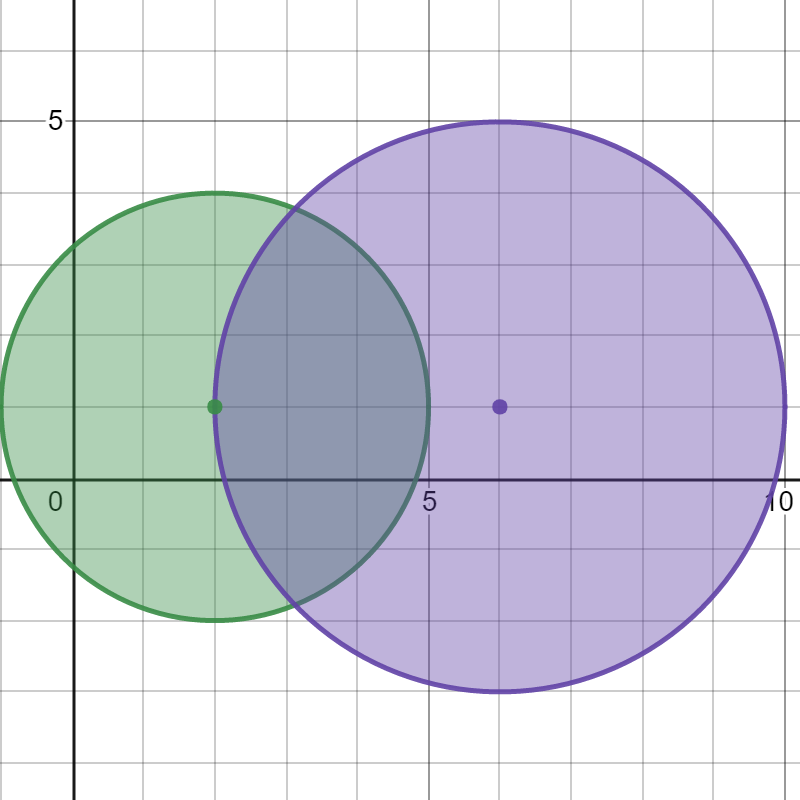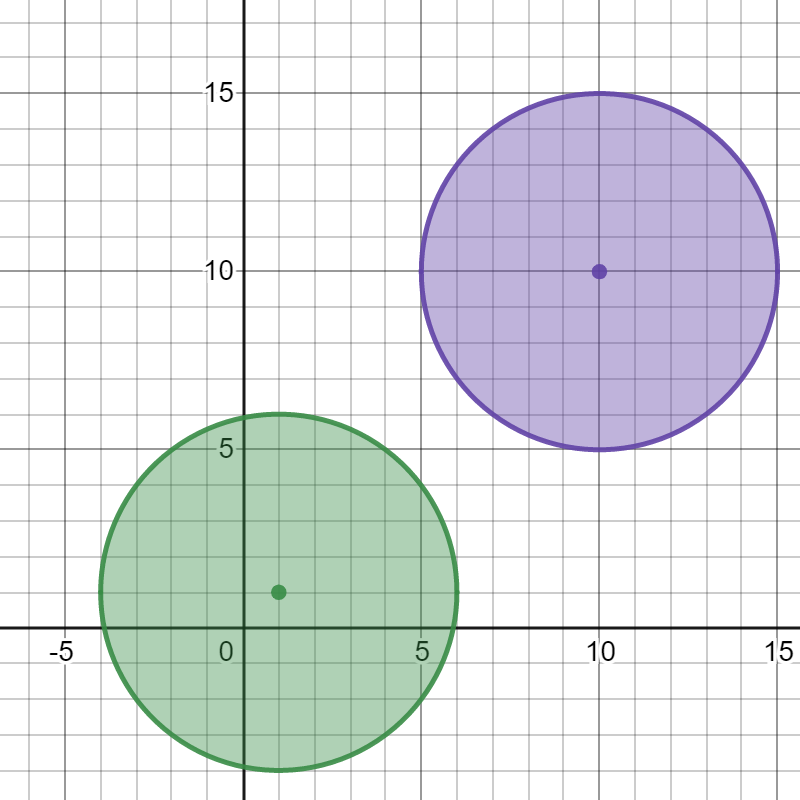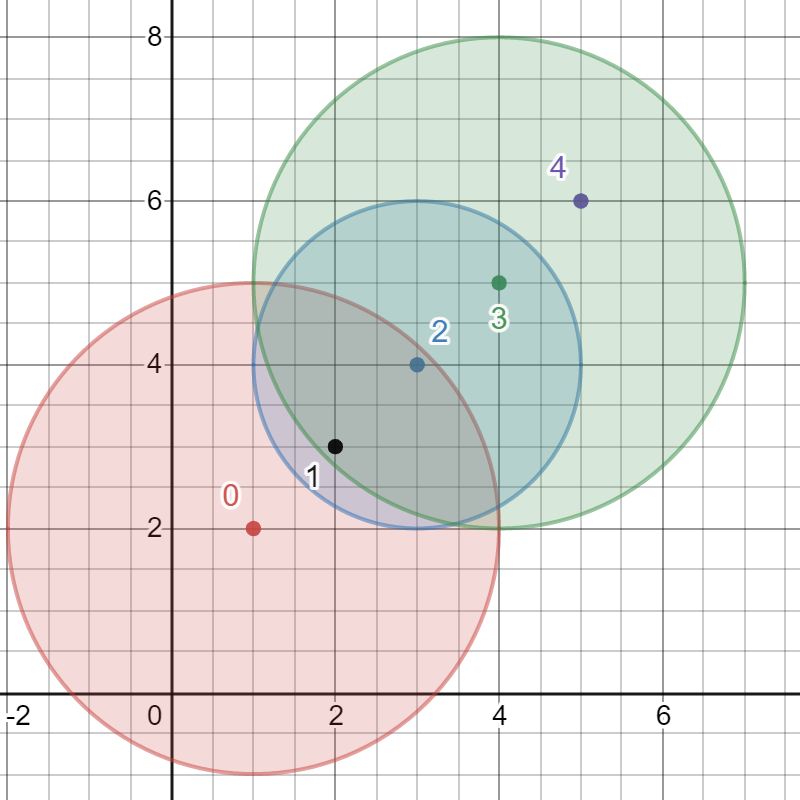- {x}
- Minimum Cost to Reach City With Discounts
- Finding 3-Digit Even Numbers
- Delete the Middle Node of a Linked List
- Step-By-Step Directions From a Binary Tree Node to Another
- Valid Arrangement of Pairs
- Subsequence of Size K With the Largest Even Sum
- Find Subsequence of Length K With the Largest Sum
- Find Good Days to Rob the Bank
- Detonate the Maximum Bombs
- Sequentially Ordinal Rank Tracker
- Rings and Rods
- Sum of Subarray Ranges
- Watering Plants II
- Maximum Fruits Harvested After at Most K Steps
- Number of Unique Flavors After Sharing K Candies
- Find First Palindromic String in the Array
- Adding Spaces to a String
- Read More...

Detonate the Maximum Bombs
You are given a list of bombs. The range of a bomb is defined as the area where its effect can be felt. This area is in the shape of a circle with the center as the location of the bomb.
The bombs are represented by a 0-indexed 2D integer array bombs where bombs[i] = [xi, yi, ri]. xi and yi denote the X-coordinate and Y-coordinate of the location of the ith bomb, whereas ri denotes the radius of its range.
You may choose to detonate a single bomb. When a bomb is detonated, it will detonate all bombs that lie in its range. These bombs will further detonate the bombs that lie in their ranges.
Given the list of bombs, return the maximum number of bombs that can be detonated if you are allowed to detonate only one bomb.
Example 1:

Input: bombs = [[2,1,3],[6,1,4]] Output: 2 Explanation: The above figure shows the positions and ranges of the 2 bombs. If we detonate the left bomb, the right bomb will not be affected. But if we detonate the right bomb, both bombs will be detonated. So the maximum bombs that can be detonated is max(1, 2) = 2.
Example 2:

Input: bombs = [[1,1,5],[10,10,5]] Output: 1 Explanation: Detonating either bomb will not detonate the other bomb, so the maximum number of bombs that can be detonated is 1.
Example 3:

Input: bombs = [[1,2,3],[2,3,1],[3,4,2],[4,5,3],[5,6,4]] Output: 5 Explanation: The best bomb to detonate is bomb 0 because: - Bomb 0 detonates bombs 1 and 2. The red circle denotes the range of bomb 0. - Bomb 2 detonates bomb 3. The blue circle denotes the range of bomb 2. - Bomb 3 detonates bomb 4. The green circle denotes the range of bomb 3. Thus all 5 bombs are detonated.
Constraints:
1 <= bombs.length <= 100bombs[i].length == 31 <= xi, yi, ri <= 105
Solution Explanation: Detonate the Maximum Bombs
This problem involves finding the maximum number of bombs that can be detonated by detonating only one bomb. The key idea is to model the problem as a graph where bombs are nodes and edges represent the ability of one bomb to detonate another.
1. Graph Representation:
We create an adjacency list g to represent the relationships between bombs. g[i] contains the indices of all bombs that bomb i can detonate. To determine if bomb i can detonate bomb j, we calculate the distance between their coordinates using the distance formula: √((x₁ - x₂)² + (y₁ - y₂)²). If this distance is less than or equal to the radius of bomb i ( rᵢ ), then bomb i can detonate bomb j, and we add j to g[i].
2. Breadth-First Search (BFS):
We iterate through each bomb as a potential starting point for detonation. For each bomb k, we perform a BFS to find all bombs that can be detonated starting from bomb k.
-
Initialization: We start with a visited set
viscontaining only the initial bombkand a queueqcontainingk. -
Iteration: In each step of BFS, we dequeue a bomb
ifromq. We then check all bombsjthat can be detonated byi(i.e.,jis ing[i]). Ifjhasn't been visited, we mark it as visited (vis.add(j)), and enqueue it toqfor further exploration. -
Maximum Count: After the BFS, the size of the
visset represents the total number of bombs detonated starting from bombk. We keep track of the maximum number of bombs detonated across all starting points.
Time Complexity Analysis:
-
Building the adjacency list
gtakes O(n²) time, where n is the number of bombs, because we compare each pair of bombs. -
The BFS for each bomb takes O(n) time in the worst case (all bombs are connected). Since we do BFS for each bomb (n times), this contributes O(n²) time overall.
Therefore, the dominant factor is the construction of the graph and performing BFS for each starting point, resulting in a total time complexity of O(n²).
Space Complexity Analysis:
-
The adjacency list
guses O(n²) space in the worst case (a fully connected graph). -
The visited set
visand the queueqin BFS use at most O(n) space.
Therefore, the overall space complexity is O(n²).
Code Examples (Python):
import math
def maximumDetonation(bombs):
n = len(bombs)
g = [[] for _ in range(n)]
for i in range(n):
for j in range(i + 1, n):
dist = math.hypot(bombs[i][0] - bombs[j][0], bombs[i][1] - bombs[j][1])
if dist <= bombs[i][2]:
g[i].append(j)
if dist <= bombs[j][2]:
g[j].append(i)
max_detonated = 0
for i in range(n):
visited = {i}
queue = [i]
while queue:
curr = queue.pop(0)
for neighbor in g[curr]:
if neighbor not in visited:
visited.add(neighbor)
queue.append(neighbor)
max_detonated = max(max_detonated, len(visited))
return max_detonated
The code examples in other languages (Java, C++, Go, TypeScript) follow a similar structure and logic, differing mainly in syntax and data structure implementations. They all achieve the same O(n²) time and O(n²) space complexity.